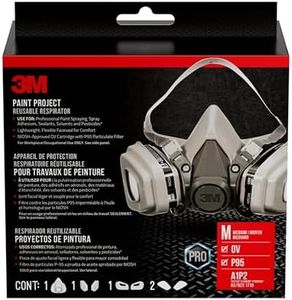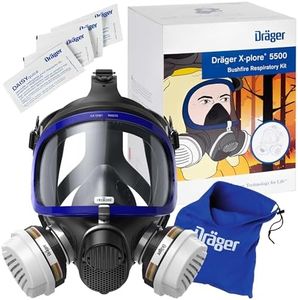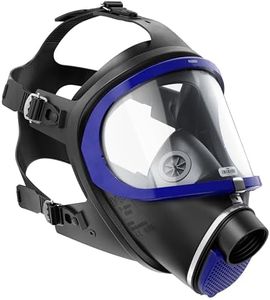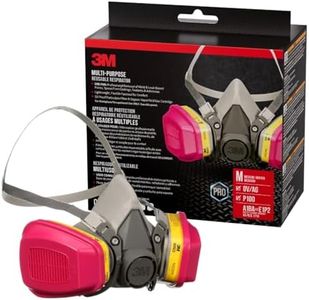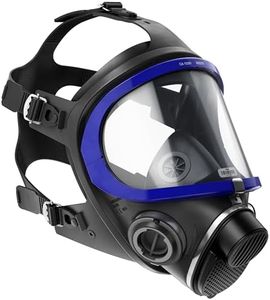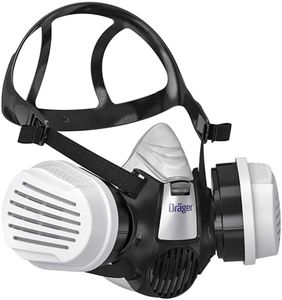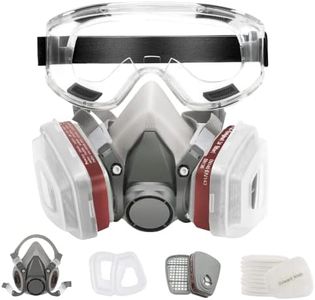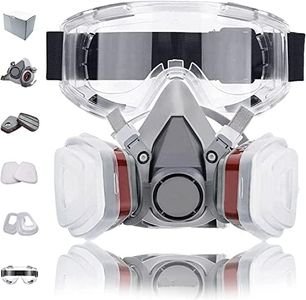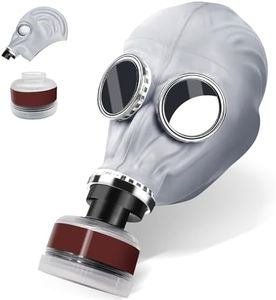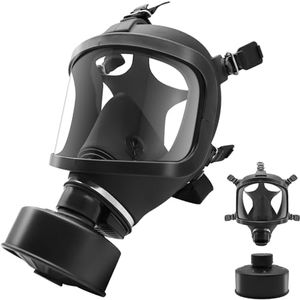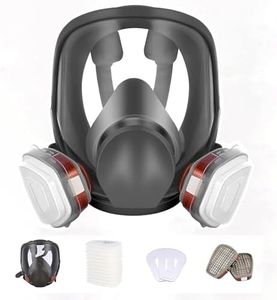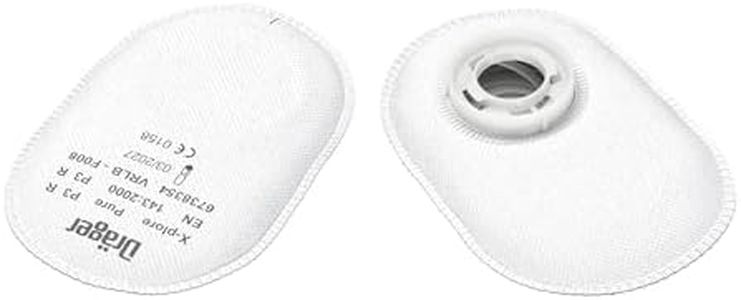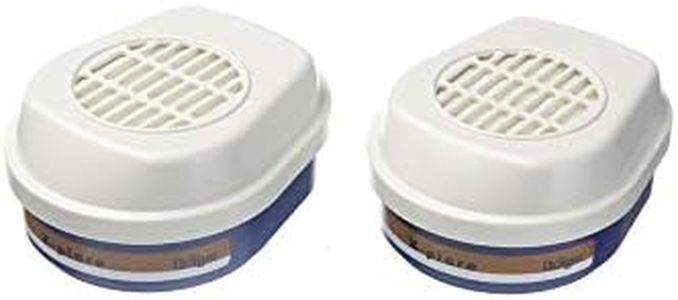We Use CookiesWe use cookies to enhance the security, performance,
functionality and for analytical and promotional activities. By continuing to browse this site you
are agreeing to our privacy policy
10 Best Gas Masks
From leading brands and best sellers available on the web.Buying Guide for the Best Gas Masks
Choosing the right gas mask is an important decision, whether your concern is workplace safety, emergency preparedness, or specialized activities such as industrial, military, or hobbyist use. The main goal is to ensure that you have adequate protection for the specific hazards you might encounter, while also ensuring comfort, fit, and ease of use. Start by thinking about what environments or situations you expect to use the mask in, and use this understanding as your guide as you consider the various features and specifications available.Filter TypeThe filter in a gas mask is what actually protects you by trapping or neutralizing harmful substances in the air. Different filters protect against different threats like gases, vapors, particulates, or biological hazards. Filters are typically categorized by color codes or designations, which indicate what they're capable of blocking (for example: certain filters are designed for organic vapors, others for chemical gases, and some for radioactive particles). To pick the right filter, you need to identify the specific threats you might face; if you’re unsure, look for combination filters that offer wider protection.
Fit and SealA gas mask must form a tight seal around your face to work effectively. If the mask doesn’t fit well, dangerous air can leak in around the edges, making even the best filter useless. Gas masks come in various sizes or offer adjustable straps to help personalize the fit. When choosing, think about your face shape and whether you have facial hair, glasses, or other features that could affect the seal—always choose a mask that allows you to test or adjust for a secure fit.
Breathing ResistanceBreathing resistance refers to how easily you can inhale and exhale while wearing the mask; this depends on filter quality and overall mask design. Some masks have a more open airflow, making it easier to breathe, which is helpful during physical activity or extended use. If you’ll wear the mask for long periods or while active, prioritize masks with low breathing resistance for comfort and endurance.
Visibility and Field of ViewMasks can have anything from small eyepieces to wide, panoramic visors. A wider field of view helps you see better and can reduce claustrophobia when the mask is on. Think about your planned activities—if you’ll be moving around a lot or need to maintain awareness of your environment, opt for a mask with a larger, clearer viewing area.
Communication FeaturesSpeaking can be difficult through some masks, but others have built-in voice projection or electronic systems that make it easier to communicate. If you expect to need to talk or coordinate with others while wearing the mask, check for features that support clear speech.
Materials and DurabilityThe materials used affect both the mask’s durability and comfort. Some are heavy-duty and made for harsh environments, while others are lighter for short-term or less demanding use. If you expect hard conditions or repetitive use, look for masks with tough, high-quality materials; for occasional use, lighter models may be preferable.
Filter Availability and Shelf LifeFilters are not universal and have a limited shelf life. Some types are readily available while others can be hard to find. Also, most filters have expiration dates after which they’re no longer reliable. If you want to be prepared for future needs, choose a mask with easily obtainable, long-lasting filters.
